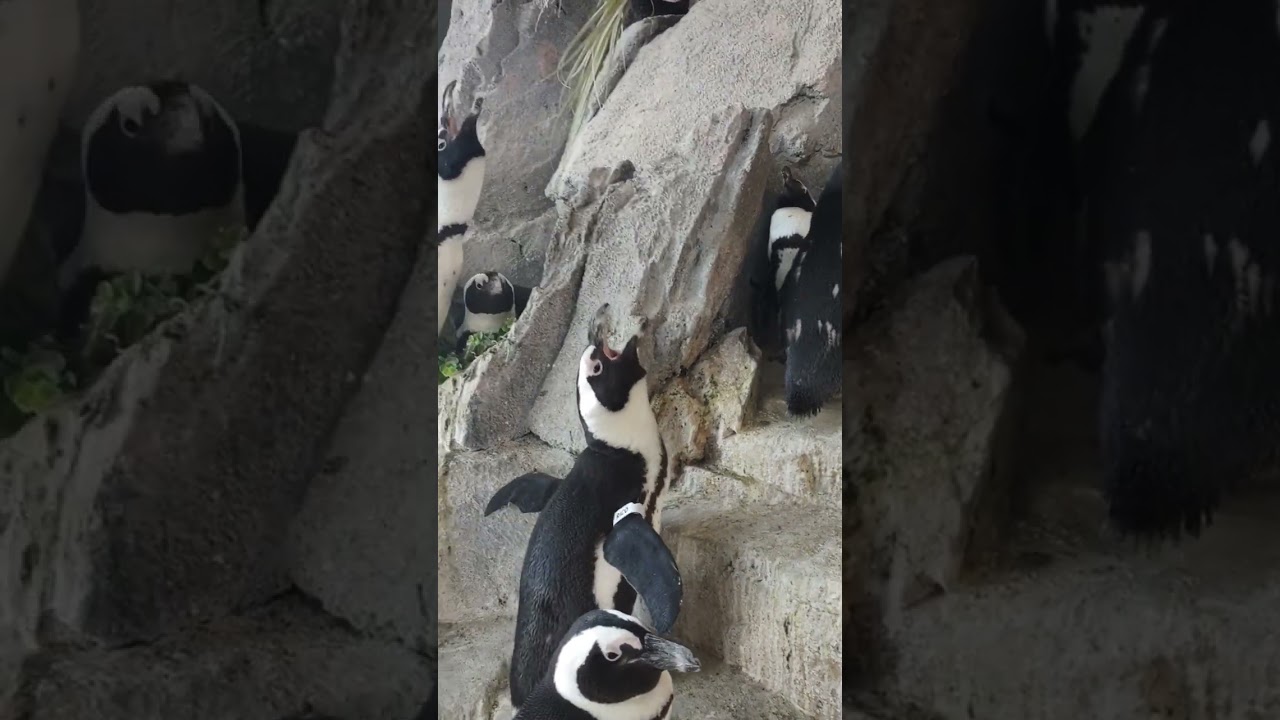– Each African penguin has a distinctive bray used in various forms of communication, including mating calls and territorial claims.
– As a flightless bird predominantly found along the southern African coastline, the African penguin is important for ecological balance and marine biodiversity.
– Zoologists and wildlife conservationists study these vocalizations to understand social dynamics within penguin colonies and apply this knowledge to conservation efforts.
– Modern zoo management integrates species-specific behavioral studies, like the analysis of penguin brays, to improve captive breeding programs and educate the public.
Efforts to preserve the African penguin are crucial as the species is currently classified as endangered. Vocal communication plays a role in their survival and breeding success.
African penguins charm observers around the world with their tuxedo-like appearance and comical waddle. However, beyond their charming demeanor lies a complex system of vocalizations unique to each bird. These vocalizations, or brays, are not mere background noise in penguin colonies but are a critical component of their social interactions and are essential for species propagation and survival.
Distinctive to each penguin, the bray serves as an audible identifier—akin to a human fingerprint—in the noisy environment of a bustling colony. The bray enables penguins to locate mates and offspring and assert territorial claims amidst the cacophony of calls from potentially thousands of other birds.
The African penguin, oft referred to as the jackass penguin due to its donkey-like braying, finds its home in the coastal regions of Namibia and South Africa. These birds are specialized in their habitat and diet, subsisting predominantly on small fish like anchovies and sardines. However, due to overfishing, habitat destruction, and oil spills, they are currently facing a danger of extinction.
Within zoology, the study of these creatures’ vocalizations provides insight into their social structure. African penguins are monogamous and have the unique challenge of finding their mate among a sea of visually identical individuals once they return from fishing at sea. It is through their distinctive brays that pairs can reunite. Researchers have discovered that African penguin couples can find each other with incredible accuracy solely by sound, proof of how critical vocalization is for their reproductive success.
Much like these wild encounters, wildlife conservation efforts in captive environments—such as modern zoos—harness the understanding of penguin vocalizations to improve breeding programs. By mimicking the coastal colonies’ natural acoustics and sound landscape, zoos can facilitate more natural breeding behaviors among their captive penguin populations. Moreover, zoos utilize this knowledge to create immersive and educational experiences for visitors, fostering a deeper appreciation and awareness of the need for penguin conservation.
Given the endangered status of African penguins, wildlife conservationists place significant emphasis on protecting these birds and their natural habitats, recognizing that their conservation is imperative for maintaining marine biodiversity. Sustained efforts are being made to monitor penguin populations, protect breeding sites from predation and human intrusion, and rehabilitate oiled or injured penguins.
Biologists and conservationists use the understanding of penguin brays to create targeted conservation strategies. By recording and analyzing bray patterns, they can assess the health and size of wild populations and the success rates of rearing chicks. This data is vital for shaping both in-situ (in the wild) and ex-situ (in captivity) conservation initiatives, ensuring the species’ future.
Furthermore, engaging storytelling and education about the lives of African penguins cultivate the public’s understanding and support for these endeavors. These efforts highlight how the uniqueness of their brays is more than just an amusing quirk—it’s a lifeline critical for the species’ survival. The African penguin’s plight has garnered international attention and support by translating scientific observations into actionable conservation strategies and encouraging public involvement.
The role of African penguins in our oceans extends beyond their charismatic appearances. These birds are indicators of marine health and play a part in the larger oceanic ecosystem that human economies rely upon. Their brays contribute to their survival and hold the key to understanding the complex interdependence within marine life.
As our exploration of African penguin communication shows, each chirp, squawk, and bray is a note in the symphony of wildlife conservation efforts—a reminder of the delicate balance we strive to maintain. Engaging with these fascinating birds through the lens of their vocal behavior is instrumental in educating, inspiring, and mobilizing conservationists and the public alike.
By championing the African penguin’s conservation and tuning into their unique sounds, we can work towards a more harmonious future for not only this beloved bird but also the vast and vibrant ecosystem they inhabit. Through continued research, dedicated conservation, and broad public support, the distinct bray of the African penguin will continue to be a call to action. This sound resonates with the urgency to protect and preserve.
*****
Source Description
Each individual African penguin bray is unique and is used for communication. Can you hear any differences in the individual donkey-like brays?
#KeeperCam


